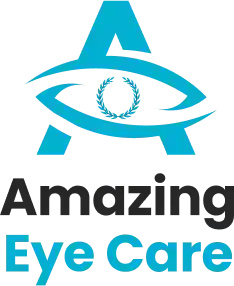If left untreated, glaucoma is a dangerous eye disease that can cause irreversible vision loss. It is often referred to as the “silent thief of sight” because it typically progresses without noticeable symptoms until significant damage has occurred. Recognizing the early signs of glaucoma is crucial for preserving your vision. In this blog, we will discuss the early warning signs of glaucoma and what you need to watch for, especially if you are concerned about glaucoma in Atascocita.
What is Glaucoma?
A class of eye conditions known as glaucoma harms the optic nerve, which is necessary for clear vision. Unusually high intraocular pressure frequently results in this injury. Over time, increased eye pressure can erode the optic nerve tissue, leading to vision loss or even blindness. The most common types of glaucoma include open-angle glaucoma, angle-closure glaucoma, and normal-tension glaucoma.
Early Signs of Glaucoma
1. Gradual Loss of Peripheral Vision
One of the most common early signs of glaucoma is the gradual loss of peripheral vision. This means that you may begin to notice difficulty seeing objects on the sides or out of the corners of your eyes. Since this vision loss is typically very gradual, many people do not notice it until significant vision is lost.
2. Halos Around Lights
Seeing halos around lights, particularly at night, can be an early indicator of glaucoma. These halos are often caused by the eye pressure changes associated with glaucoma. If you notice halos around lights that persist, it’s important to have your eyes examined by an eye care professional.
3. Eye Pain or Pressure
Experiencing eye pain or a feeling of pressure in the eyes can be an early symptom of glaucoma, particularly in cases of angle-closure glaucoma. This type of glaucoma can cause sudden increases in eye pressure, leading to severe pain and even nausea. If you experience sudden eye pain, it is essential to seek immediate medical attention.
4. Redness of the Eye
Persistent redness in the eye can be a sign of various eye conditions, including glaucoma. While eye redness is often associated with less serious issues, such as allergies or minor infections, it can also indicate increased eye pressure. If you notice prolonged redness that doesn’t resolve with over-the-counter treatments, consult with an eye doctor.
5. Blurred Vision
Blurred vision, especially in low light conditions, can be another early sign of glaucoma. This symptom may be more noticeable when transitioning from bright to dim lighting. Blurred vision can also occur due to other eye conditions, so it’s important to have a comprehensive eye exam to determine the underlying cause.
6. Nausea and Vomiting
Although less common, nausea and vomiting can accompany severe eye pain in acute cases of angle-closure glaucoma. These symptoms are due to the rapid increase in eye pressure. If you experience these symptoms along with eye pain, seek emergency medical care immediately.
7. Frequent Changes in Prescription Glasses
If you find that you need to change your prescription glasses more frequently than usual, it could be a sign of glaucoma. Changes in vision due to glaucoma can progress slowly, necessitating adjustments to your prescription as your vision deteriorates.
Risk Factors for Glaucoma
Understanding the risk factors for glaucoma can help you stay vigilant about your eye health. Some common risk factors include:
- Age: People over 60 are at a higher risk for glaucoma.
- Family History: Having a family history of glaucoma increases your risk.
- Medical Conditions: Conditions such as diabetes, high blood pressure, and heart disease can increase the risk of glaucoma.
- Eye Conditions: Previous eye injuries or surgeries can elevate your risk.
- Ethnicity: African Americans, Asians, and Hispanics have a higher risk of developing certain types of glaucoma.
How to Protect Your Vision
Early detection and treatment of glaucoma are key to preventing vision loss. The following actions can be taken to maintain your vision:
1. Regular Eye Exams
Schedule regular comprehensive eye exams, especially if you are at higher risk for glaucoma. During these exams, your eye doctor will measure your eye pressure, examine your optic nerve, and check for other signs of glaucoma.
2. Know Your Family History
Be aware of your family history of glaucoma and inform your eye doctor. This information can help guide your eye care plan and prompt earlier and more frequent screenings.
3. Maintain a Healthy Lifestyle
A healthy lifestyle can support overall eye health. This includes regular exercise, a balanced diet rich in fruits and vegetables, and avoiding smoking.
4. Take Medications as Prescribed
If you are diagnosed with glaucoma, take any prescribed medications exactly as directed by your eye doctor. Medication can assist reduce visual pressure and stop the optic nerve from getting any worse.
5. Protect Your Eyes
When participating in activities that could injure your eyes, wear protective eyewear. Eye injuries can increase the risk of developing glaucoma.
Glaucoma is a serious eye condition that requires early detection and intervention to prevent vision loss. By being aware of the early signs of glaucoma, you can take proactive steps to protect your vision. Regular eye exams and prompt attention to any changes in your vision are crucial. If you have concerns about glaucoma in Atascocita, consult with a qualified eye care professional to discuss your risk factors and create a plan for maintaining your eye health.


